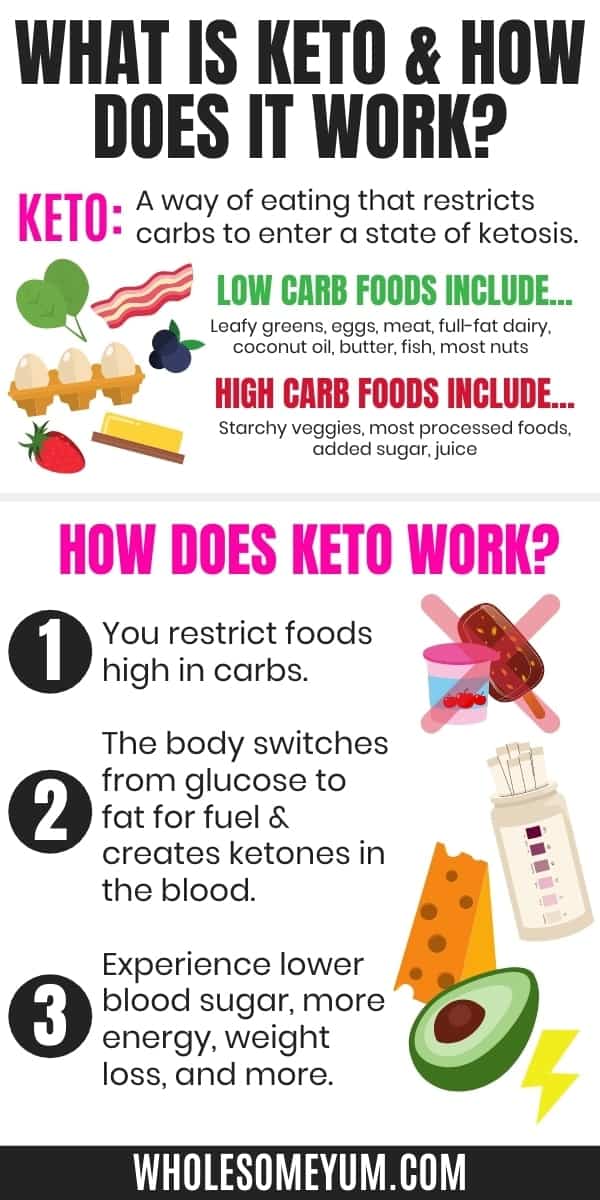When it comes to crafting a menu that is both nutritious and satisfying, it is essential to carefully consider the composition of your meals. Focusing on a low-carbohydrate approach can be a great way to achieve your health goals, but it requires careful planning to ensure you are getting all the necessary nutrients.
Developing a strategic and well-balanced low-carb meal plan is not just about eliminating carbohydrates from your diet; it is about finding the right balance of proteins, healthy fats, and fibrous vegetables to keep you energized and satiated throughout the day. By understanding the principles behind low-carb eating and incorporating diverse food choices, you can create a sustainable and enjoyable meal strategy.
One of the key aspects of a successful low-carb meal plan is the careful selection of alternative ingredients. Rather than relying solely on traditional carbohydrate sources like bread or pasta, experimenting with substitutes such as cauliflower rice or zucchini noodles can add variety to your meals while still keeping your carbohydrate intake in check.
- Creating a Balanced Low-Carbohydrate Meal Plan
- Understanding the Importance of Macros
- Choosing the Right Ratio of Carbohydrates, Proteins, and Fats
- Identifying Low-Carbohydrate Foods
- Incorporating Lean Proteins and Healthy Fats
- Focusing on Fiber-rich Vegetables and Whole Grains
- Meal Prepping for a Low-Carbohydrate Lifestyle
- Planning Ahead and Batch Cooking
- Creating a Weekly Meal Schedule
- Maximizing Efficiency with Meal Prep Techniques
- Questions and answers
Creating a Balanced Low-Carbohydrate Meal Plan
In this section, we will explore the art of crafting a well-balanced meal plan that focuses on reducing carbohydrate intake without compromising on nutrition. By strategically incorporating a variety of food groups and utilizing alternative ingredients, this approach ensures a satisfying and wholesome low-carbohydrate eating experience.
Achieving a balanced low-carbohydrate meal plan involves more than just eliminating high-carb foods; it requires a thoughtful consideration of nutrient-rich options. Emphasizing fresh vegetables, lean proteins, healthy fats, and high-fiber foods is essential for maintaining overall health and satiety throughout the day.
When constructing each meal, aim for a mix of colors on your plate. Load up on leafy greens, vibrant vegetables, and low-sugar fruits to provide vital vitamins, minerals, and antioxidants. Incorporating lean proteins such as fish, poultry, and tofu aids in muscle recovery and supports a feeling of fullness. Don’t be afraid to experiment with plant-based protein sources, such as legumes and nuts, to add more variety to your meals.
Additionally, including healthy fats in your low-carbohydrate meal plan is crucial for balanced nutrition. Avocados, olive oil, nuts, and seeds are excellent sources of monounsaturated and polyunsaturated fats, which promote heart health. When consumed in moderation, these fats can also enhance flavor and increase the satisfaction level of your meals.
Fiber plays a crucial role in maintaining a healthy digestive system and regulating blood sugar levels. Incorporating fiber-rich foods into your low-carbohydrate meal plan, such as whole grains, nuts, seeds, and non-starchy vegetables, helps promote satiety and supports overall gut health.
Remember to listen to your body and adjust portion sizes based on individual needs and goals. Balancing macronutrients such as carbohydrates, proteins, and fats to fit your lifestyle ensures a sustainable approach to long-term health and weight management.
Creating a balanced low-carbohydrate meal plan does not have to be a daunting task. With a focus on nutrient-dense foods from a variety of sources, you can enjoy a fulfilling and satisfying eating experience while achieving your dietary goals.
Understanding the Importance of Macros

Understanding the significance of macronutrients in your diet is essential for achieving and maintaining a successful low-carbohydrate meal plan. These macronutrients, comprising proteins, fats, and carbohydrates, play a crucial role in providing the necessary energy and nutrients that fuel your body.
A well-balanced intake of macronutrients is key to managing your carbohydrates effectively. Protein, known as the building blocks of cells, aids in muscle repair and growth, while healthy fats contribute to the absorption of vitamins and help maintain brain health. Carbohydrates, in the right quantities, provide energy for performing daily activities and exercise.
- Proteins: These essential nutrients are responsible for repairing and building tissues, supporting the immune system, and producing enzymes and hormones. Include lean meats, poultry, fish, eggs, tofu, and legumes in your low-carbohydrate meal plan to meet your protein requirements.
- Fats: Contrary to popular belief, not all fats are bad. Healthy fats, such as avocados, nuts, seeds, and olive oil, are beneficial for heart health and provide a feeling of satiety, helping you stay full for longer. Incorporate these fats into your meals to maintain a well-rounded low-carbohydrate diet.
- Carbohydrates: While a low-carbohydrate meal plan focuses on reducing carb intake, it is important to remember that some carbohydrates are necessary for optimal bodily function. Choose complex carbohydrates like leafy greens, vegetables, and whole grains, as they offer valuable nutrients and fiber without causing blood sugar spikes.
By understanding the importance of macros and carefully selecting the right balance of proteins, fats, and carbohydrates, you can design a sustainable low-carbohydrate meal plan that promotes overall health and weight management.
Choosing the Right Ratio of Carbohydrates, Proteins, and Fats
Optimizing the balance of carbohydrates, proteins, and fats is essential for creating a successful and sustainable low-carbohydrate meal plan. Achieving the right ratio of these macronutrients can have a significant impact on your energy levels, satiety, and overall health. In this section, we will explore various strategies to help you make informed decisions when choosing the right proportions of carbohydrates, proteins, and fats for your low-carbohydrate diet.
Identifying Low-Carbohydrate Foods
When it comes to crafting a successful and sustainable low-carbohydrate meal plan, one of the crucial steps is being able to identify foods that are low in carbohydrates. This knowledge is essential for making informed food choices and ensuring that your meals align with your dietary goals.
One way to recognize low-carbohydrate foods is to understand their composition. Carbohydrates are a type of macronutrient found in various forms, including sugars, starches, and fibers. By focusing on the content of these macronutrients in different foods, you can determine their carbohydrate levels.
Sugars: Foods high in sugars tend to be higher in carbohydrates. Soda, candy, and desserts are obvious examples. However, it’s important to remember that sugars can also be found in natural sources such as fruits, some dairy products, and sweet vegetables like carrots and beets. While these natural sources have other nutritional benefits, they should be consumed in moderation as part of a low-carbohydrate meal plan.
Starches: Foods rich in starches, such as potatoes, rice, bread, and pasta, are typically high in carbohydrates. However, there are lower-carbohydrate alternatives available for these staples. For instance, substituting cauliflower rice for traditional rice or using zucchini noodles instead of pasta can significantly reduce your carbohydrate intake while still allowing you to enjoy your favorite dishes.
Fibers: High-fiber foods tend to be lower in carbohydrates. Fiber is a type of carbohydrate that is not fully digested by the body. It can be found in various vegetables, fruits, whole grains, and legumes. Incorporating these fiber-rich foods into your low-carbohydrate meal plan can provide essential nutrients while helping to control blood sugar levels and promote feelings of fullness.
The ability to identify low-carbohydrate foods plays a central role in designing an effective meal plan. By understanding the composition of sugars, starches, and fibers in different food sources, you can make informed choices that align with your dietary goals. Remember, it’s not about eliminating carbohydrates entirely, but rather making smart choices and finding alternative options that support a low-carbohydrate lifestyle.
Incorporating Lean Proteins and Healthy Fats
:max_bytes(150000):strip_icc()/VWFit-Meal-Plan-Journey-7-Day-Low-Carb-Meal-Plan-56bf36cefc64489d89d5f3d6ae014ff4.jpg)
When it comes to designing a successful low-carbohydrate meal plan, it is essential to incorporate lean proteins and healthy fats. This section will explore the importance of including these key components in your meals and provide guidance on how to do so effectively.
Proteins play a vital role in the body, serving as the building blocks for tissues and assisting in various essential functions. Lean proteins are particularly valuable in a low-carbohydrate meal plan as they are low in fat and carbohydrates while still providing necessary amino acids. Examples of lean proteins include poultry, fish, tofu, lean cuts of meat, and eggs.
In addition to lean proteins, incorporating healthy fats is crucial for a balanced low-carbohydrate meal plan. Contrary to popular belief, not all fats are harmful to our health. Healthy fats, such as those found in avocados, nuts, seeds, and olive oil, are beneficial for our bodies and can contribute to feelings of satisfaction and satiety.
- Include a serving of lean protein at each meal, such as grilled chicken breast or baked fish.
- Opt for cooking methods that minimize the use of added fats, such as grilling, baking, or steaming.
- Incorporate healthy fats into your meals by adding a handful of nuts or seeds to your salads or using avocado as a spread.
- Choose lean cuts of meat and remove any visible fat before cooking.
- Experiment with plant-based protein sources like tofu or tempeh to add variety to your meals.
By incorporating a variety of lean proteins and healthy fats into your low-carbohydrate meal plan, you can ensure that you are meeting your nutritional needs while enjoying a diverse and satisfying menu. Remember to consult with a healthcare professional or registered dietitian to personalize your plan based on your specific dietary requirements.
Focusing on Fiber-rich Vegetables and Whole Grains
When it comes to optimizing your low-carbohydrate meal plan, one crucial aspect to consider is the inclusion of fiber-rich vegetables and whole grains. These nutrient-dense options not only provide essential vitamins and minerals, but they also contribute to overall satiety, making them an excellent addition to a balanced diet.
To increase your fiber intake, incorporate a variety of vegetables into your meals. Broccoli, Brussels sprouts, and leafy greens like spinach and kale are excellent choices that offer a wealth of fiber and other beneficial nutrients. Pairing these vegetables with lean protein sources, such as grilled chicken or tofu, can create a satisfying and healthy meal.
In addition to vegetables, whole grains should also feature prominently in your low-carbohydrate meal plan. Foods like quinoa, brown rice, and whole wheat bread contain higher levels of fiber compared to their refined counterparts, helping to regulate blood sugar levels and promote better digestion. These whole grains can be enjoyed in dishes like salads, stir-fries, or as a side to your main course.
- Incorporate a variety of fiber-rich vegetables into your meals
- Pair vegetables with lean protein sources for a satisfying meal
- Add whole grains like quinoa and brown rice to regulate blood sugar levels
- Opt for whole wheat bread as a fiber-rich alternative to refined options
- Experiment with different recipes and preparations to keep meals interesting
Remember, the key to designing an effective low-carbohydrate meal plan is to focus on incorporating fiber-rich vegetables and whole grains. By including these nutritious options in your diet, you can maintain a healthy balance while enjoying delicious and satisfying meals.
Meal Prepping for a Low-Carbohydrate Lifestyle
Mastering the art of meal prepping is a crucial skill for anyone looking to embrace a lifestyle with reduced carbohydrate intake. By dedicating a small portion of your time each week to planning and preparing your meals in advance, you can ensure that you have delicious and nutritious low-carbohydrate options readily available, making it easier to stick to your dietary goals and achieve long-term success.
When embarking on a low-carbohydrate lifestyle, variety is key to avoid monotony and maintain motivation. By incorporating a diverse range of fresh, seasonal ingredients, you can create a plethora of flavorful dishes that will keep your taste buds satisfied. Experimenting with different spices, herbs, and cooking techniques can add excitement and complexity to your meals, making them even more enjoyable.
One of the main advantages of meal prepping for a low-carbohydrate lifestyle is the convenience it offers. By designating a specific day or time each week to plan your meals, create a shopping list, and cook in bulk, you can eliminate last-minute decision-making and ensure that healthy options are readily available when hunger strikes. This not only saves you time and reduces stress in the long run but also reduces the likelihood of reaching for unhealthy, high-carbohydrate alternatives when you’re pressed for time.
A successful low-carbohydrate meal prep also involves careful portion control. By measuring and portioning out your meals in advance, you can have better control over your calorie intake, promoting weight management and overall well-being. Using meal prep containers or portion-sized ziplock bags can make this process even more convenient, allowing you to easily grab a perfectly portioned meal or snack when needed.
Lastly, maintaining consistency and accountability are crucial factors in sustaining a low-carbohydrate lifestyle. By prepping your meals in advance, you can ensure that you are consistently sticking to your dietary goals, avoiding impulsiveness and making mindful choices. Additionally, keeping a food diary or using a tracking app can help you monitor your macro and micronutrient intake, creating awareness and enabling adjustments as necessary for optimal results.
In conclusion, meal prepping for a low-carbohydrate lifestyle empowers you to take control of your dietary choices, allowing for variety, convenience, portion control, and consistency. By investing a little time and effort upfront, you can set yourself up for success in achieving your health and wellness goals.
Planning Ahead and Batch Cooking
In the realm of creating a successful and efficient low-carbohydrate meal plan, one crucial aspect that should not be overlooked is the concept of planning ahead and embracing the art of batch cooking. These two essential practices can significantly contribute to the effectiveness and sustainability of your meal plan, allowing you to stay on track and achieve your dietary goals.
When it comes to planning ahead, it involves taking the time to carefully strategize your meals for the upcoming days or even weeks. This entails considering your dietary requirements, food preferences, and specific low-carbohydrate options that you intend to incorporate into your meals. By carefully planning your meals in advance, you can ensure that you have all the necessary ingredients on hand, saving you time and energy during busy weekdays.
Batch cooking, on the other hand, involves preparing larger portions of your low-carbohydrate meals at once and storing them for future consumption. This practice not only saves time but also helps maintain consistency in your eating habits. By preparing and cooking several meals in one go, you can make the most of your time in the kitchen, reducing the need for frequent cooking sessions throughout the week. This approach also allows you to have readily available healthy meal options, minimizing the temptation to resort to high-carbohydrate convenience foods.
When planning ahead and batch cooking, it is essential to embrace variety and explore different low-carbohydrate ingredients, recipes, and cooking techniques. This will not only keep your meals exciting and enjoyable but also ensure that you are getting a balanced and nutritionally rich diet. Consider incorporating diverse sources of protein, such as lean meats, poultry, fish, and plant-based options like tofu or legumes. Experiment with an array of vegetables and green leafy options to provide essential vitamins, minerals, and fiber for optimal health.
Tip: An effective strategy is to set aside a specific time each week for planning, grocery shopping, and cooking. Make it a routine, dedicating a few hours to map out your meals, create a shopping list, and cook multiple servings of your low-carbohydrate dishes. This way, you can streamline your meal preparation process, ensuring that you have delicious and nutritious meals readily available when you need them.
In summary, by embarking on the path of planning ahead and embracing the practice of batch cooking, you can enhance the success of your low-carbohydrate meal plan. These strategies not only save time and effort but also provide you with a wide variety of meals, making the journey towards better health and well-being enjoyable and sustainable.
Creating a Weekly Meal Schedule

Structuring your weekly meals in a strategic and organized manner is crucial to the success of a low-carbohydrate diet. By creating a comprehensive and well-thought-out plan, you can ensure that you are incorporating a variety of healthy and satisfying meals throughout the week while sticking to your low-carb goals.
When developing your weekly meal schedule, it is important to consider a range of factors: taste preferences, dietary restrictions, nutritional needs, and time constraints. This will allow you to create a schedule that not only meets your dietary goals but also fits seamlessly into your lifestyle.
Diversify Your Menu: Incorporating a diverse range of protein sources, vegetables, and healthy fats into your meals will keep your diet interesting and your taste buds satisfied. Experiment with different recipes and flavors to discover new favorites while ensuring you are getting the necessary nutrients.
Plan Ahead: Taking the time to plan your meals for the week in advance can save you time and stress. Map out each day’s breakfast, lunch, dinner, and any snacks or desserts you may want to include. This will make grocery shopping more efficient and help prevent impulsive, high-carb food choices.
Batch Cooking: Prepare large batches of low-carb staples such as grilled chicken, roasted veggies, or cauliflower rice that can be used as the base for multiple meals throughout the week. This will not only save you time but also ensure you always have something low-carb and delicious on hand.
Consider Eating Out: Dining out can be challenging when following a low-carbohydrate meal plan, but with a little planning, it can be done. Research restaurants in your area that offer low-carb options or modify existing dishes to suit your needs. Stick to protein-rich options and opt for extra veggies instead of high-carb sides.
Monitor Progress: Keep track of your meals and their impact on your overall well-being. Pay attention to how particular foods make you feel and adjust your meal schedule accordingly. This will allow you to fine-tune your plan and optimize your low-carbohydrate journey.
With a well-designed weekly meal schedule, you can set yourself up for success on a low-carbohydrate diet. By diversifying your menu, planning ahead, batch cooking, considering eating out options, and monitoring progress, you can enjoy a satisfying and sustainable low-carb eating plan.
Maximizing Efficiency with Meal Prep Techniques

In this section, we will explore various strategies that can help you make the most out of your meal preparation when following a low-carbohydrate diet. By implementing these techniques, you can streamline the process, save time, and ensure that you have delicious and nutritious low-carb meals readily available throughout the week.
1. Batch Cooking: One of the most effective ways to maximize efficiency is by batch cooking your meals. This involves preparing larger quantities of food at once and storing them in individual portions for later consumption. Not only does this save time in the long run, but it also allows you to easily control portion sizes and ensure that you have a variety of low-carb options to choose from.
2. Meal Prepping Components: Another approach to streamline your meal preparation is by prepping individual meal components in advance. For example, you can chop vegetables, cook proteins, and prepare dressings or sauces ahead of time. This way, when it comes time to assemble your meals, you already have the building blocks ready to go, making the process much quicker and more efficient.
3. Utilizing Freezer-Friendly Options: Freezing meals or meal components can be a lifesaver when it comes to maximizing efficiency. By preparing larger quantities and storing them in the freezer, you can easily pull out a ready-made low-carb meal whenever you are short on time or simply don’t feel like cooking. Just make sure to label and date your frozen items for easy identification.
4. Creating a Meal Plan: Having a well-thought-out meal plan can significantly enhance your meal prep efficiency. By planning your meals in advance, you can ensure that you have all the necessary ingredients on hand, avoid last-minute grocery store runs, and eliminate decision fatigue when it comes to deciding what to eat. Consider using online resources or meal planning apps to help you create a personalized low-carbohydrate meal plan.
5. Investing in Meal Prep Containers: Investing in high-quality meal prep containers can make a world of difference when it comes to organizing and storing your prepped meals. Look for containers that are microwave-safe, leak-proof, and have compartments to keep different food items separate. This will not only make your meals more visually appealing but also help maintain the freshness of your food.
6. Finding Efficient Cooking Techniques: Exploring different cooking techniques can also help you save time and effort in the kitchen. For example, using a slow cooker or an Instant Pot allows you to set it and forget it, as these devices can cook your meals while you focus on other tasks. Additionally, consider cooking in bulk and utilizing one-pot recipes that require minimal cleanup.
- Batch cook meals for the week at once
- Prep individual meal components in advance
- Store freezer-friendly options for quick meals
- Create a personalized meal plan
- Invest in high-quality meal prep containers
- Explore efficient cooking techniques
By incorporating these meal prep techniques into your low-carbohydrate diet, you can simplify your meal preparation process, save valuable time, and ensure that you stay on track with your health and nutrition goals.
Questions and answers
What is a low-carbohydrate meal plan?
A low-carbohydrate meal plan is a dietary approach that focuses on reducing the intake of carbohydrates, particularly refined carbohydrates such as white bread, pasta, and sugary foods. It emphasizes the consumption of protein, healthy fats, and non-starchy vegetables.
Why would someone choose a low-carbohydrate meal plan?
There are several reasons why someone might choose a low-carbohydrate meal plan. It can be effective for weight loss, as it helps control hunger cravings and stabilizes blood sugar levels. It may also benefit individuals with certain medical conditions, such as diabetes or metabolic syndrome.
What are some tips for designing an effective low-carbohydrate meal plan?
When designing a low-carbohydrate meal plan, it’s important to focus on incorporating lean sources of protein, such as chicken, fish, and tofu. Including healthy fats like avocado, olive oil, and nuts is also essential. Additionally, choosing non-starchy vegetables and limiting processed foods and sugary beverages can contribute to a successful meal plan.
Are there any potential challenges or side effects to following a low-carbohydrate meal plan?
While a low-carbohydrate meal plan can have many benefits, there can also be challenges and side effects. Some people may experience initial fatigue or a decrease in athletic performance as their body adjusts to the change in fuel source. It’s important to ensure adequate nutrient intake and consult with a healthcare professional before making significant dietary changes.
Can a low-carbohydrate meal plan be sustainable for long-term use?
Yes, a low-carbohydrate meal plan can be sustainable for long-term use if done correctly. It’s important to focus on variety, including a wide range of nutrient-dense foods and ensuring adequate fiber intake. It may also be helpful to seek guidance from a registered dietitian to ensure a well-balanced and sustainable approach to low-carbohydrate eating.
What is a low-carbohydrate meal plan?
A low-carbohydrate meal plan is a dietary plan that restricts the intake of carbohydrates, typically below 20-50 grams per day, in order to promote weight loss and improve overall health.
Are low-carbohydrate meal plans effective for weight loss?
Yes, low-carbohydrate meal plans have been found to be effective for weight loss. By reducing the intake of carbs, the body is forced to burn stored fat for energy, leading to weight loss.
What are some tips for designing an effective low-carbohydrate meal plan?
Some tips for designing an effective low-carbohydrate meal plan include: choosing whole, unprocessed foods, including plenty of vegetables, incorporating healthy fats and proteins, planning meals in advance, and staying properly hydrated.
Can a low-carbohydrate meal plan have any negative effects on the body?
While a low-carbohydrate meal plan can be effective for weight loss, it can have some potential negative effects such as initial fatigue, constipation, and nutrient deficiencies if not properly balanced. It is important to consult with a healthcare professional or a registered dietitian before starting any new dietary plan.
How long should one follow a low-carbohydrate meal plan to see results?
The duration to see results can vary from person to person. However, many individuals start experiencing the benefits of a low-carbohydrate meal plan within the first week or two, including initial weight loss and increased energy levels. Long-term adherence to the plan is important for sustainable results.

I’m Jake Morgan, a 23-year-old Keto diet and fitness expert from sunny California. Passionate about helping you achieve your dream body with the right nutrition and workout. Connect or consult via Telegram.








